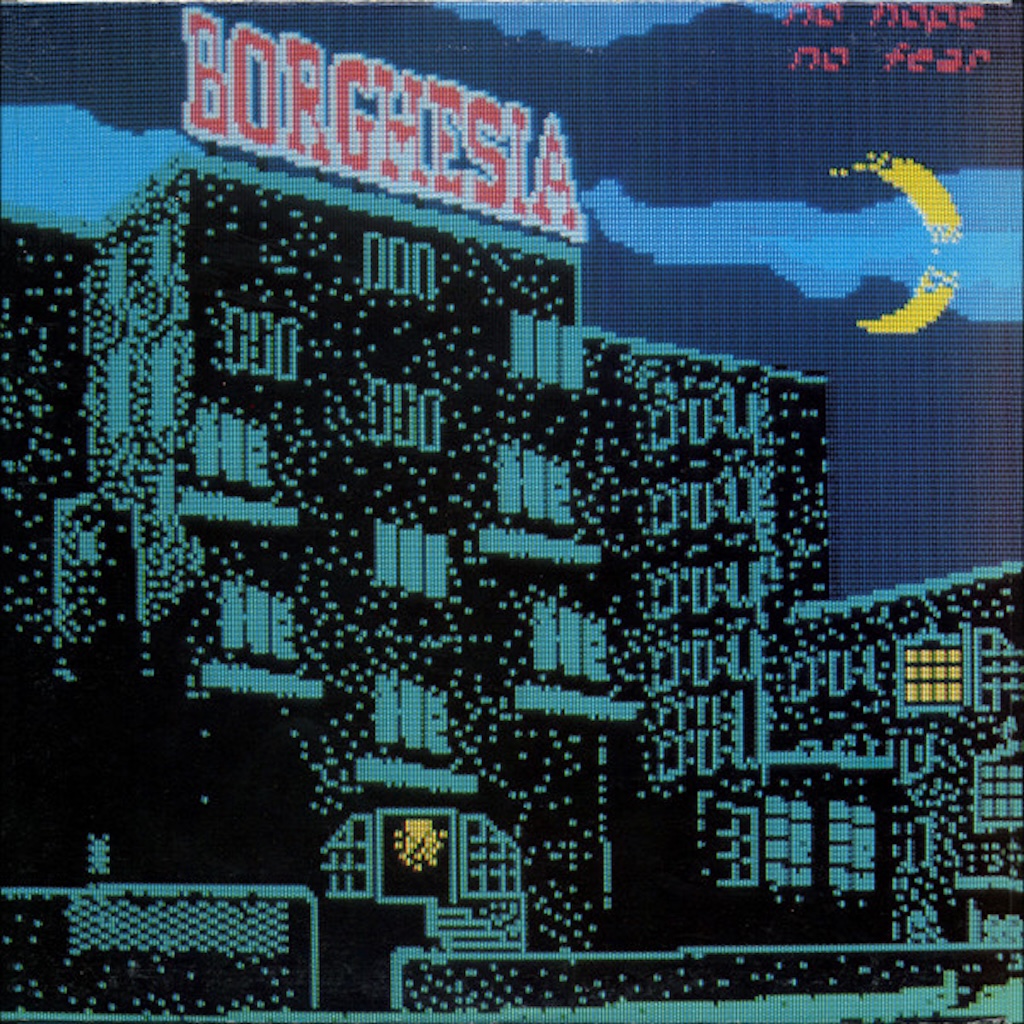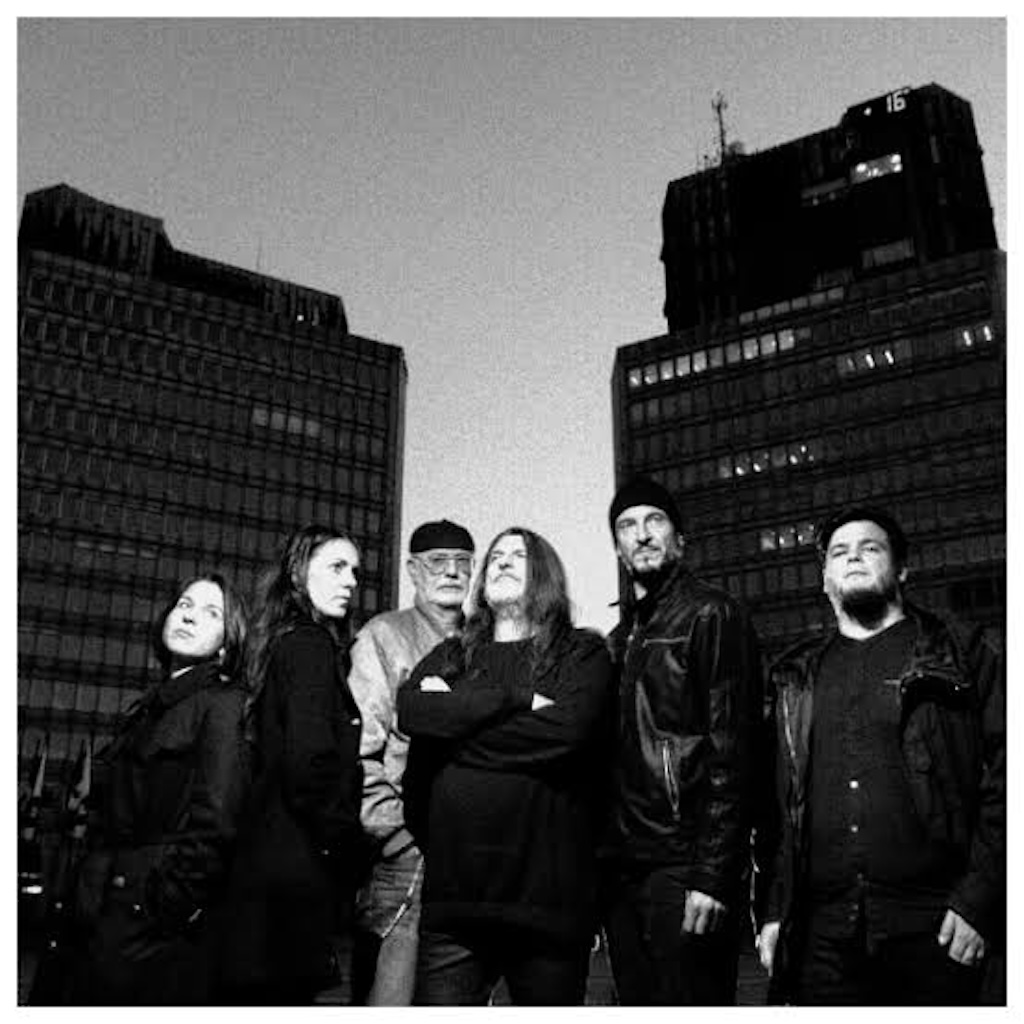Borghesia

Borghesia es una banda interesante no solo por su consistente y buen trabajo. También incluye su(s) país(es) de origen e ideología. Decimos países porque son originarios de Yugoslavia, hoy Eslovenia. La ideología de Borghesia se basa principalmente en el activismo político (Wykonawcy, 2025), así como en la libertad sexual, un tema importante para ellos; el video musical de la canción «On» de 1985 es un claro ejemplo de aquello.
Sus inicios fueron como una compañía de teatro alternativo que se convirtió en una banda pop en 1982, evolucionando hacia sonidos más relacionados con el EBM (Electronic Body Music) con claras influencias de DAF o Front 242. Cabe destacar que cantan en su idioma original, no en inglés; sin embargo, su trabajo electrónico combina elementos electrónicos muy reconocibles, como samples de películas y programas de radio, combinando diferentes géneros y estilos.
Otro elemento interesante es su conexión con Alemania, tanto geográfica como musicalmente, lo cual no solo es un detalle importante en su sonido, sino que también existe una conexión con un movimiento local con bandas como Laibach, que desarrolló un sonido diferente con reminiscencias más germánicas, pero que forma parte de un movimiento electrónico alternativo esloveno de los años 80, llamado la Nueva Escena Artística Eslovena.
La banda está compuesta por Aldo Ivančič y Dario Seraval como miembros originales, ambos a cargo de la programación. También incorporaron a otros miembros para sus giras por Europa.
En esta oportunidad, analizaremos los temas del álbum «No Hope No Fear», que es, por mucho, el álbum más industrial electrónico. No es un trabajo de EBM con temas bailables; al contrario, es un material crudo, áspero, duro y desesperanzado. Lleno de contenido político contra el establishment, cercano al final de la era soviética. La banda aquí se siente más cómoda con la electrónica e incluye además melodías más oscuras.
“No Hope No Fear”
“Encuéntrame en la ciudad
En los callejones
Encuéntrame en el sótano húmedo
Y te gustará el olor
Y te gustará el olor
Y te gustará el olor
De un fuego ardiente”
Ni Upanja Ni Strahu
El primer tema, «No Hope No Fear», es un oscuro mantra esloveno de desesperación en un ritmo electrónico lleno de samples en inglés y un repetitivo «Dangerous place». Probablemente sea el tema menos oscuro del EP, pero suena áspero, como dando una orden.
«Sentenced to Death» es una melodía electrónica industrial de cinco minutos con elementos de Front 242. El único problema es el abuso repetitivo del sampling.
«133», el tercer tema, evoca una antigua canción de Art of Noise, «Donna», del EP «Daft» de 1983. Es un tema interesante con un uso equilibrado de samples, máquinas de escribir, teléfonos y cuerdas.
«Mud» es el momento culminante de este trabajo. Un ritmo hipnótico y repetitivo con una voz oscura, aquí Borghesia logra su momento y pone su sello personal.
«Hunters», de nuevo un buen tema corto, esta vez con sello esloveno, ya que suena tanto a Borghesia como a Laibach. “We are Everywhere” no es un tema destacable, pero mantiene su nivel.
En general, “No Hope No Fear” es un buen producto, no una obra maestra, pero representa un momento y un trabajo muy honesto para un movimiento basado en una época de gran tensión, primero con la caída de la Cortina de Hierro y luego con la guerra serbio-croata. Estos temas oscuros casi predijeron el caos futuro, por lo tanto, esta banda merece nuestra atención y, por supuesto, forma parte de una evolución en la escena electrónica industrial europea.

Borghesia is an interesting band not only due to its consistent good work. It also includes its country(ies) of origin and ideology. We say countries because they were originally from Yugoslavia, today Slovenia. Borghesia’s ideology is based mainly in a political activism (Wykonawcy, 2025) as well as sexual freedom, which it is an important issue for them- the musical video for the song ‘On’ from 1985 is a clear example.
They started as an alternative theatre group who became a pop band in 1982 evolving to sounds more related to EBM (Electronic Body Music) with DAF or Front 242 influences. It is also important to remark that they sing in their original language not in English, however their electronic work mixes very recognizable electronic elements such as samples from films and radio broadcasts combining different genres and styles.
Another interesting element is their connection with Germany – geographically and musically- and which is not only an important detail in their sound but also there is a connection with a local movement with bands like Laibach who developed a different sound with more Germanic reminiscences, but it is part of an electronic Slovenian alternative movement from the 80s. called the New Slovenian Art scene.
The band consist of Aldo Ivančič and Dario Seraval as original members both in charge of programming. They also incorporated other members according to they toured around Europe.
In this opportunity, we are going to analyze the tracks from the album ‘No Hope No Fear’ which is far the most Industrial Electronic album. It is not an EBM work at all with dancing tracks, on the contrary it is a raw material, rough, harsh and hopeless. Full of political content against the establishment, near the end of the Soviet era. The band feels more comfortable with electronics and includes dark melodies.
‘No Hope No Fear’
“Find me in the city
On the back streets
Find me in the damp basement
And you’ll like the smell
And you’ll like the smell
And you’ll like the smell
Of a burning fire”
Ni Upanja Ni Strahu
The first track ‘No Hope No Fear’ is a dark Slovenian mantra with despair in an electronic beat full of samples in English with a repetitive «dangerous place». This is probably the less dark track in this EP but it sounds harsh like a command.
‘Sentenced to Death’ is a five minutes Industrial electronic melody with Front 242 elements. The only problem is the repetitive (abuse) of sampling.
‘133’ the third track evokes a very old Art of Noise song Donna from the 1983 EP album Daft. It is an interesting track with a balanced use of samples, typewriters, telephones and strings.
‘Mud’ is the highest moment in this work. An hypnotic and repetitive beat with a dark voice, Borghesia achieves its moment and signature. ‘Hunters’ once again a good short track, this time with an Slovenian signature as it sounds both Borghesia or Laibach. ‘We are Everywhere’ is not a remarkable track but it keeps a level.
In general ‘No Hope No Fear’ is a good product not a masterpiece, but it represents a moment and a very honest work for a movement based in a hot area, first with the fall of the Iron Curtain and later with the Serbian-Croatian war- this dark tracks almost predicted this future chaos. Therefore, this band deserves our attention and of course is part of an evolution in the industrial electronic scene in Europe.
https://borghesia.bandcamp.com
Bibliography
Wykonawcy. (2025). BORGHESIA (SK-CRO). Retrieved from Industrial Art:

